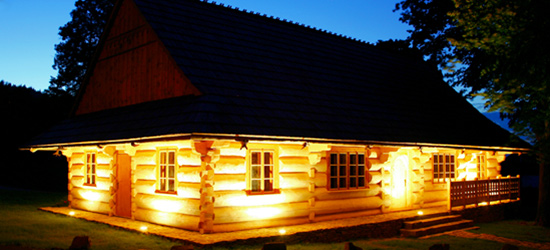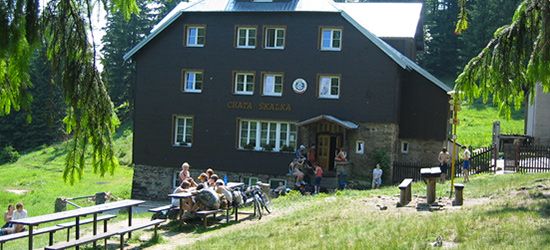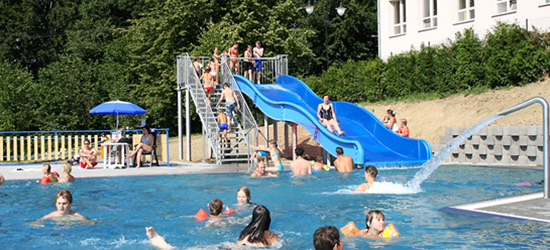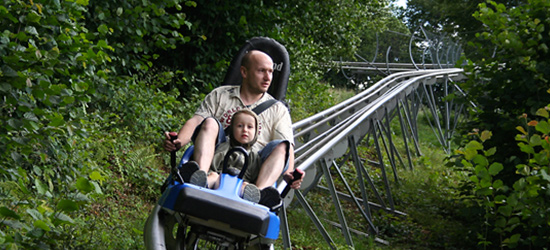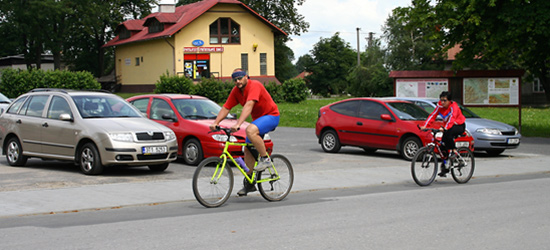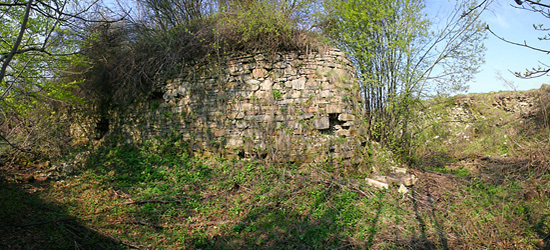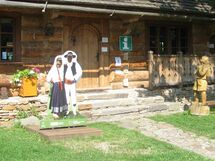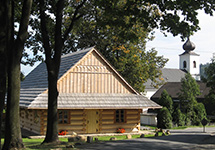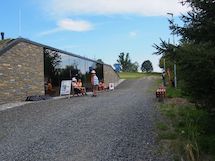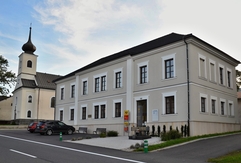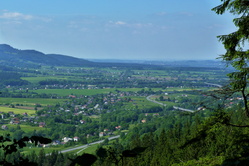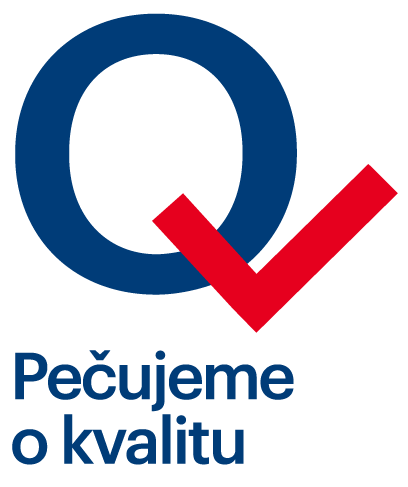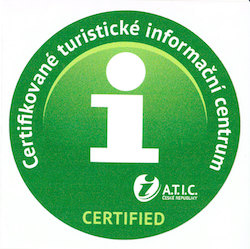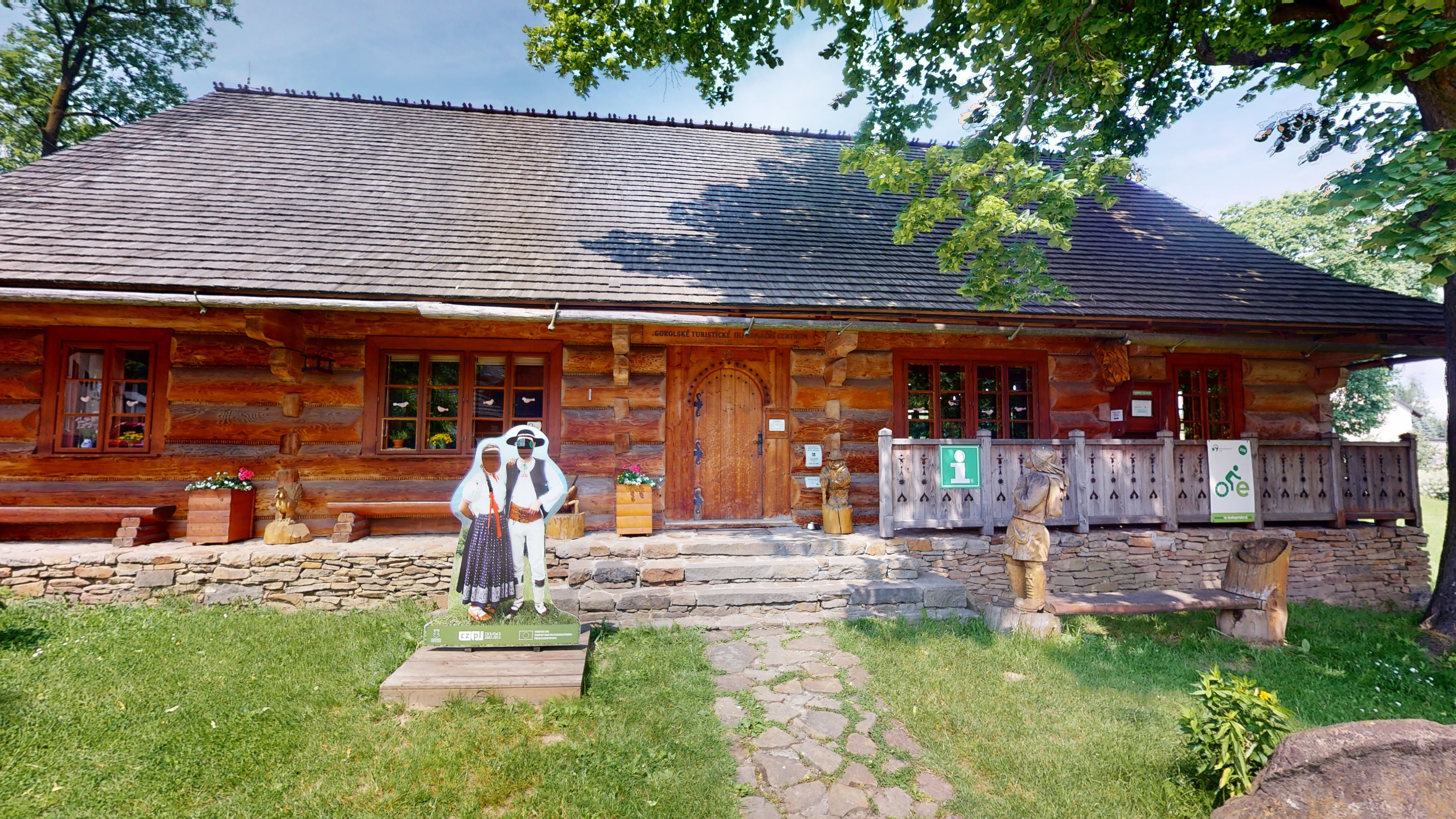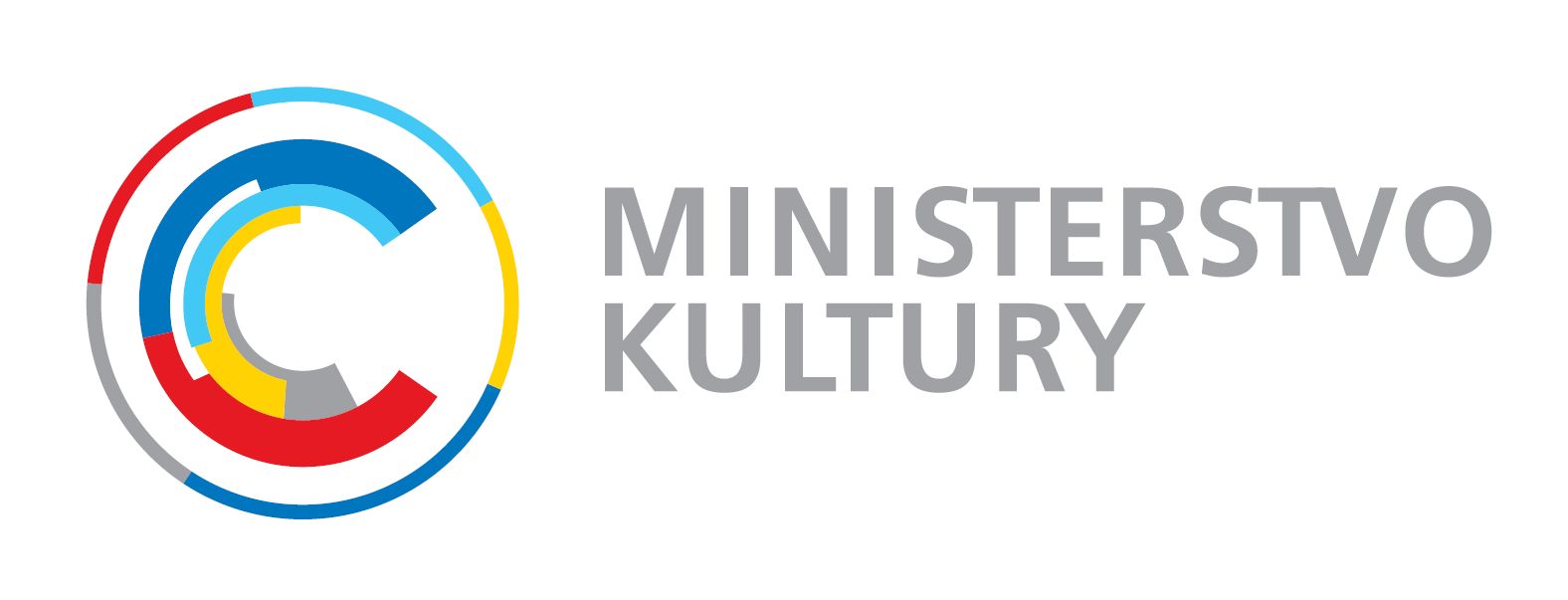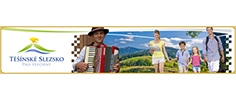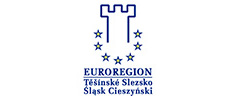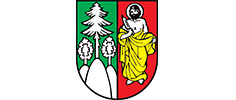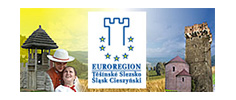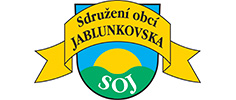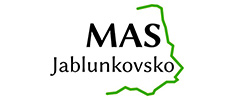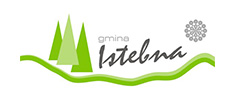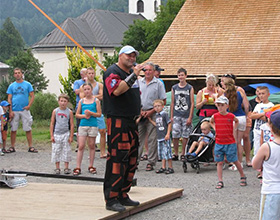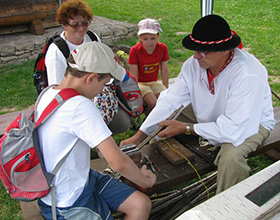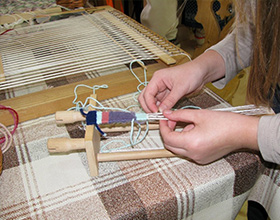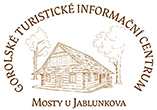Traditional life of Gorals
History of the Region
The history of the region in the easternmost part of the Czech Republic is closely connected to the Wallachian (Geldings) colonization. As part of this long-term process, which struck the entire outer arc of the Carpathians from Romania, through Ukraine, today's Slovak-Polish border to the northeast Moravia, occurred since the late 15th century the colonization of mountain and foothill areas of the Moravian-Silesian and Silesian Beskids.
At that time the area was formed by the mountainous and heavily forested terrain, barren land and for agricultural relatively unfavorable weather conditions. This terrain was rarely inhabited and was colonized only by people who flied to this inhospitable region from the surrounding lowlands and cities, and who tried to make a living farming in the valley. These people were bound with the soil, trying to grow crops and raise sheep and other cattle for milk and meat.
To that situation came nomads of the Balkans - Geldings with a completely different lifestyle. They dealt primarily with grazing herds of sheep on mountain and foothill meadows and they raised sheep solely for milk. From milk they produced cheese and other products. Therefore these Geldings were not bound with the soil and thus enjoyed more freedoms than local residents, who were subjected to local nobility and had to work really hard. Geldings only rented the land for consideration as pastures and traveled from place to place. Tolerating certain freedoms of new coming Geldings was based on the economic interest of nobility - not only the Geldings were using the uninhabited and for agriculture inappropriate sites, but they even rent. Therefore, the nobility wanted to keep them permanently and motivated them with certain privileges and supported the local government authorities of Geldings.
These aspects have led to a massive development of mountain colonization in the Teschen area. New glades were formed gradually, at their subsequent reclamation began to participate with Geldings even the local population, which continued increasing, because more and more people still fled from the crowded lowlands to mountain areas. A more permanent settlement and gradual mixing of the local population with Geldings occurred since the second half of the 16th century. New villages at that time were often not "established" as it is known from other locations, but it was the opposite process. In places of later communities originally shepherds rented a meadow, lived in sheepfolds and later began to build more permanent dwellings, which became the basis of the new villages. Although assimilation of Geldings with the local population proceeded relatively quickly, still in the early 18th century the Geldings were able to maintain a distinctive character and liberties granted by the Teschen nobility. They had their own government, headed by a Wallachian duke, and even a Wallachian court. The Duke had for example power with gamekeepers to control individual pastures, forests and oversee the sheepfolds. The Position of the duke was not based on hereditary, they lived in Mosty u Jablunkova, Bocanovice, Návsí or in Wisla (now Poland) and originally had to defend the interests of the Geldings before the nobility. Gradually the Teschen nobility assigned the dukes greater privileges to get them more committed to promote their own interests. An example is the permission granted to John Reeve Jebastysovi of Mosty u Jablunkova under which he gained freedom to keep land and mill in 1633. (This historical event had much later (1790) influence on the construction of the Timbered Vogtei in Mosty u Jablunkova; wooden house which was reconstructed in 2008 resides the Goral-tourist information center dealing with promoting original goral habits).
The result of mixing two colonization factors (local people "fleeing" from the lowlands and nomadic Wallachians from Romania) was the beginning of the development of mountain sheepfold farming, which became the basis for the existence of the Silesian Gorals - the hard and diligent people of the Beskids mountain environment with deeply-rooted elements of freedom. The territory of Teschen Silesia was formed by specific location near to Jablunkov Pass. Jablunkov Pass is place for crossing the northeastern Carpathian mountain range because of its altitude 550-605 m above sea level and morphological differentiation best. Thanks to that the trade and military routes led here from time immemorial. Also since time immemorial a trail led through here, which in ancient times was called "amber" (drove the amber from the Baltic Sea to the south), in the Middle Ages "copper" (copper was transported from central-Slovakian ore mines to the north to Hamburg and on by sea). Still later Silesian buyers used the trail – they were called Furmans and so the road was called "furmaněc". The importance of Jablunkov Pass for commercial purposes is confirmed by the Košice - Bohumín track (construction from 1868 to 1872), which still provides much of the transport of goods.
With regard to the protection of this route and later even defense of the principality (Jablunkov Pass is on the border of the former Silesia and Hungary) against raids from the south, was on the southern and south-eastern border of Silesia built a unique system of fortifications, in military terminology referred to as "Šance".
Traditional life of Gorals
Many of the original elements from the beginning of colonization of mountain pastures by the Wallachians persisted even into the lives of following population – the Gorals (after the assimilation of Wallachians with the local population). In the early settlement shepherds pastured their flocks in the sheepfolds - clearings among the woods. They built simple shelters here for themselves called sheds and with wooden boards they fenced in a place where sheep spent the night – they called it “koshor”. These koshors were gradually moved along from place to place. Step by step they began to build their sheds from stone, for the roof they used shingles made of chipped wood and inside they placed an open fire (bonfire) with a boiler for cooking sheep's milk for making cheese. Shepherds used homemade wooden utensils. It is interesting that the dishes were not carved out of great quality wood, but were produced directly from the cut tree trunks. They used old trunks or pulp already beginning to rot inside, they dug the interior to get cylinder, and provided a bottom. In this way various kinds and different sizes of cookware were created.
In later times Gorals did not live permanently in sheds in sheepfolds, but they built houses at lower altitudes and regularly drove the cattle to pasture. Basic crops grown by Gorals were oats, spring rye, clover, grass, flax, cabbage and potatoes. The cultivating of flax was the basis for the production of linen. In the breeding of domestic animals prevailed cows, pigs, and most importantly sheep, which supplied the raw material for making clothing.
To the spring expulsion and autumn propelling of the sheep to the sheepfolds is connected a number of interesting customs and traditions, and currently these are being renewed in Teschen Silesia. On the Czech side of the region it deals with promotional matters - interesting events for local people and tourists are created. On the Polish side of the region (Koniaków,Istebna) gradually the grazing habits are being restored and once again they become a "daily bread" provision, and not only a forgotten history. In the spring, when the mountain snow is melted, the habit of expulsion of sheep to the mountain sheepfolds took place. Sheep were rounded up from individual owners in one place, mutually mixed and then the shepherd (bača) led them to pasture at the sheepfolds in mountain locations. Traditional custom bears in the local dialect name 'Miyszani łowiec "and is associated with a number of interesting habits. The „replica“ of this custom is held annually in May in the Teschen region in the village Košařiska and is associated with the craft fair, performances by folk bands, good food and drink. In late September, around St. Michal´s day, sheep and other livestock were propelled from mountain sheepfolds down to the village and were once again assigned to owners. Traditional custom bears in the local dialect name 'Rozsod "and again is held in September in the Teschen region in the village Košařiska. To each sheepfold were assigned sheep from 20-30 owners. According to the number of sheep that owner placed here (5-25) then they received cheese from shepherd. Sheep were usually milked 3 times a day and cheese that was made was strictly recorded, so that it could be fairly divided. The milk had more fat at the end of the summer and so it had been used to make fatter sheep cheese called bryndza, which was then sold to the cities.
The end of sheepfold´s farming is associated with the 19th century when the Teschen nobility began to restore forests for the greater need of wood for iron production. The first blast furnace for iron production was lit in Třinec in 1839. In order to have enough wood, new laws and regulations were applied in the first part of the 19th century, which prohibited the sheep grazing in the woods. Sheepfolds were gradually afforested and pastoralism gave way the heavy industry. Gorals were offered new opportunities for livelihood, "simplier" earnings and a modern life. Already these lifestyle changes had a great impact on the further development of cultural traditions and Goral culture. Another milestone was the construction and commissioning of Košice-Bohumín Railroad in 1871. Originally it was a single-track with one tunnel under the Jablukov pass, since 1898 there were two tracks and second tunnel. Railways increased mobility of the population, traditional crafts that were established for the production of iron (coalman production, cartage) started to decline. People were more moving towards work in the emerging Třinec steel work factory and lost their bond with the land in native village. The traditional form of the mountain communities began to change, both economically and culturally, and also socially.
The houses in which Gorals lived were built of wooden beams and fitted with a gable roof. A cleaved shingle was used for roofing. The original houses had only one room inside - the parlor, where the whole family life was concentrated. In the middle there was an open fireplace. Gradually they began to build furnaces, in front of them was erected dine wide fireplace covered with dirt (nolepa), where they cooked on a kettle hanging on a tripod over the fire. First, a fire was made of beech wood in oven and charcoal was then scrambled to “nolepa” where they cooked. An interesting feature was that the furnace had no chimney, but the smoke was going out into the room and out the door. Cottages were therefore called "smoke cottages" or "kurloky". In the corner of parlor was located a table that once had a stone slab, and around it were benches that were used for sleeping at night.. For other seating options the Gorals produced stools from trees, and later formed chairs with decorated backs. Next to the furnaces were shelves (polenice), on which laid and hung home-made dishes and tools, the homesteader´s bed stood in the corner. The floor was made from compacted dirt and the threshold from a high beam to prevent cold get into the room. The parlor was the only place where they had “heating” even in the days when houses already had more rooms. Here the entire life was concentrated. In tough winters people even took domestic animals into the parlor, especially young ones, to protect them from freezing. This is no wonder since the cattle was the most precious thing people had.
Clothing and costumes of Gorals preserved a number of elements until today that are very similar to those on the clothes and costumes of other Balkan and Carpathian highlanders. The male costume consisted of a loose linen shirt without a collar, a chest slit decorated with crochet embroidery, black vest (bruclík), narrow trousers of white cloth and a thick mantle made from a single rectangular piece of brown fabric. On the feet were worn shipcloth or wool knitted socks called “kopyca” and leather shoes called “krpce”. The calves were laced with twisted woolen cords (notkunča). On their heads the Gorals wore a wide felt hat or fur caps. The costumes could be in the winter completed by fur, decorated on the front part with knitting pieces of colored leather. Everyday and festive clothing of Goral women differed only in the quality of materials. Underclothes was consisting of a long linen shirt without sleeves, called časnocha that fully grasped the upper body. On it, the women wore short white shirt (kabotek) from the thin domestic canvas. The lower part of the garment consisted of two aprons. From the back a black dress apron was worn made of gross domestic canvas, strongly corrugated. In the front first was worn a white and later dyed blue apron (modřiněc), later fitted with printed decoration . The costume was complemented by long knitted stockings (nogavički) of red wool. Stockings had to be long enough because they were worn as wrinkled in order to create a stronger layer and women were not so cold then. On their feet they wore sheep cloth or knitted socks and they also used leather shoes called „krpce“. Unmarried girls were without a hat and they braided their hair in a ponytail. Married women covered their heads with white cross linked bonnet with lace forehead part. This bonnet was received by a married woman on her wedding day during a ceremonial called „Bonneting of the bride“ which was a part of a traditional wedding. Over the bonnet a scarf of fine home linen was tied and these scarves were decorated with small cross stitch embroidery in black or red. As outerwear served a big tarp triple bound twill woven on a domestic loom or cloth of finer linen or damask. In the winter they even wore a short ram’s coats. An important part of gorals life was the culture and the arts. In every house lived at least one person who was occupied with the folk production, initially out of necessity, and later just for fun. An example is the already mentioned manufacture of wooden utensils and tools, embroidered or crocheted decorations on costumes, etc. Also the music played in the lives of mountain people an important role. It was associated with sheepfold farming methods in the region as well as with customs. Typical trombits, horns, bagpipes, whistles, fujaras were the work of local self-taught craftsman, although the production of these tools was not easy. Shepherds used them not only for fun and pleasure of soul, but also as a means of communication with other shepherds or people in the village. A special musical instrument were „Gajda“ (similar to Czech bagpipes) and their production was not a simple matter. Whoever wanted to make bagpipes, had to manage several techniques: he had to handle working with wood, metal, horn and skin. Fortunately, people like this still live even today – the folk artists who can create beautiful crafts work. Visitors can meet with them at various fairs and cultural events, their works are available in regional shops.
address: Mosty u Jablunkova 381
email: This email address is being protected from spambots. You need JavaScript enabled to view it.
phone: +420 558 341 586




